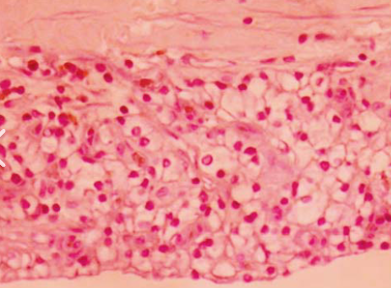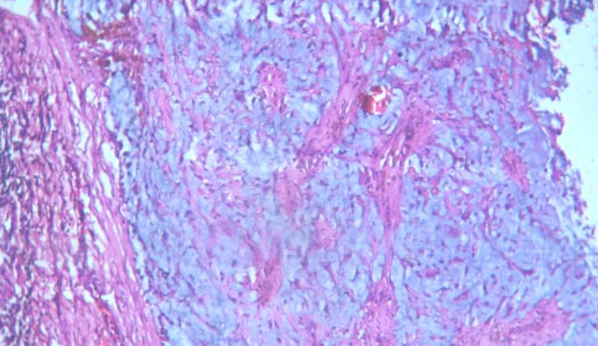
CHARLES N. ELLIS, MD

“There has been evidence that the volume of fat that surrounds the heart, called epicardial adipose tissue, is increased in patients with psoriasis.
This fat layer occurs in everybody between the myocardium and pericardium, and it was thought to be merely a protective cushion for the heart,” said Charles N. Ellis, MD, Professor Emeritus at the Department of Dermatology, University of Michigan Medical School.

“I was surprised as a dermatologist to learn that epicardial adipose tissue is not just a cushion, but is biologically active tissue. It doesn’t just sit there and protect your heart, but also is involved in coronary artery status or coronary artery disease.1
Epicardial adipose tissue volume is not something that would enter the realm of thinking for most dermatologists who treat patients with severe psoriasis.
But maybe it should, according to a new study in the Journal of the American Academy of Dermatology.2
“Systemic inflammation is thought to be the cause of cardiac comorbidities in psoriasis. But general systemic inflammation also occurs in other conditions like rheumatoid arthritis, inflammatory bowel disease and so forth,” said Dr. Ellis, who is one of the study’s authors.
“Epicardial adipose tissue, which sits around the heart and coronary arteries, is now known to secrete hormones that affect these arteries. It is quite possible that increased epicardial adipose tissue volume is one of the reasons that patients with psoriasis have increased coronary artery disease.
“We did not test that specifically in our patients with psoriasis, but the role of epicardial adipose tissue is a distinct possibility.”
Ellis and colleagues conducted a single center study of 25 patients, ages 34 to 55, with severe psoriasis (14 men, 11 women) and 16 matched controls (5 men, 11 women) without psoriasis or rheumatic inflammatory disease. Patients and controls had no known heart disease risk factors or family history of premature cardiovascular disease. Participants underwent computed tomography (CT) and non-contrast CT heart images to determine epicardial adipose tissue volume.
“We showed that epicardial adipose tissue volume surrounding the heart is increased in male patients with psoriasis. We are not sure about women yet. There was a trend for women with psoriasis to have higher epicardial adipose tissue.”
What that means for patients with psoriasis is that an increase in systemic inflammation may cause an increase in the amount of epicardial adipose tissue, Dr. Ellis explained.
“We selected relatively young people to participate to look at early-stage heart issues and pre-coronary artery disease. We want to know whether epicardial adipose tissue is a driver of future coronary artery conditions, is it a predictor of coronary artery conditions, or both. They are somewhat independent issues that are obviously related but this could very well be a test that could be a predictor of future coronary problems.”
Despite their findings, the study authors are not suggesting ordering CT tests without a specific clinical indication.
“We do not yet know the predictive value well enough to recommend that these tests be obtained just to measure the epicardial adipose tissue volume. On the other hand, dermatologists, primary care doctors, and internists can all be advised that if a psoriasis patient needs cardiac imaging, then it would be valuable to measure the epicardial adipose tissue volume in the same test. If it’s elevated over what is standard for an age group, then it could very well be a predictor that this patient needs to pay even more attention to their coronary vasculature than they otherwise would.”

According to Dr. Ellis, a similar study in patients with milder psoriasis would be helpful.
“In our study, we chose patients who were severe because they had at least 10% body surface area affected and one episode of inpatient care or systemic treatment. This is commonplace for a lot of psoriasis patients in dermatologists’ offices.”
Future studies should also include racially diverse participants, he noted. All but one of the participants in this study were white.
“Also, it would be nice to follow our patients, but that is out of the reach of this study.”
Although dermatologists do not generally order CT imaging tests, it is something they need to know about, said Dr. Ellis.
“Without changing the test in any way, we showed that you can easily calculate the volume of the epicardial adipose tissue in these relatively routine tests… Cardiac imaging is like a lot of tests we do not do but we need to know about. This is something we should be sharing with our patients and colleagues in internal medicine and primary care.”
By Lisette Hilton
REFERENCES
- Bettencourt N, Toschke AM, Leite D, Rocha J, Carvalho M, Sampaio F, Xará S, Leite-Moreira A, Nagel E, Gama V. Epicardial adipose tissue is an independent predictor of coronary atherosclerotic burden. Int J Cardiol. 2012 Jun 28;158(1):26-32. doi: 10.1016/j.ijcard.2010.12.085. Epub 2011 Jan 20. PMID: 21255849.
- Ellis CN, Neville SJ, Sayyouh M, Elder JT, Nair RP, Gudjonsson JE, Ma T, Kazerooni EA, Rubenfire M, Agarwal PP. Epicardial adipose tissue volume is greater in men with severe psoriasis, implying an increased cardiovascular disease risk: A cross-sectional study. J Am Acad Dermatol. 2021 Oct 19:S0190-9622(21)02648-7. doi: 10.1016/j.jaad.2021.09.069. Epub ahead of print. PMID: 34678237.
DISCLOSURE
Dr. Ellis has served as a consultant to various manufacturers of pharmaceuticals for psoriasis.


